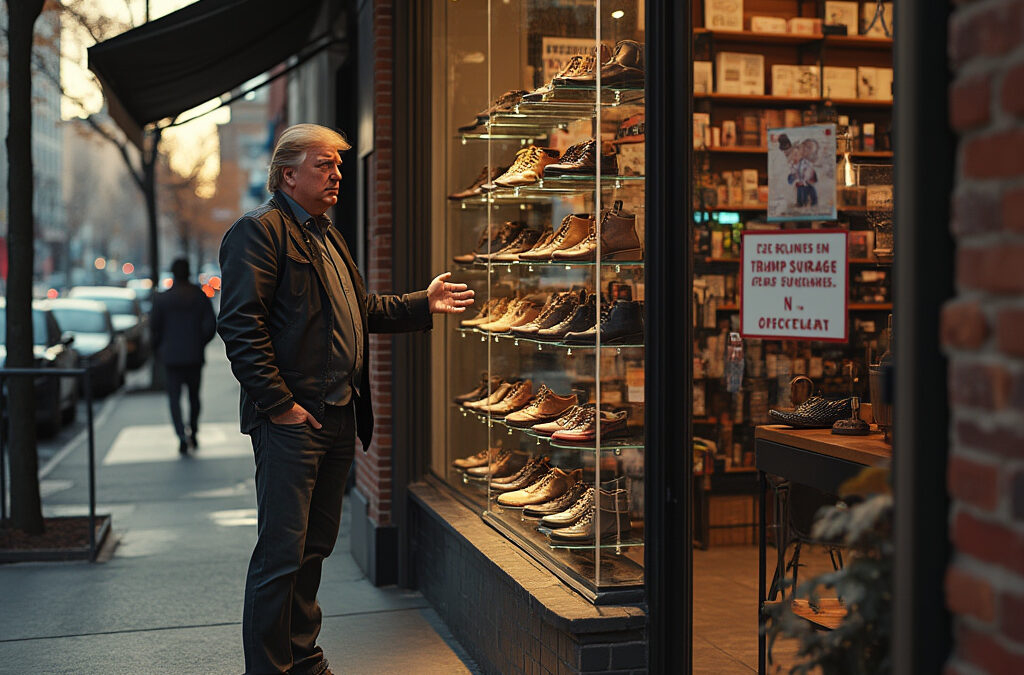Trump’s Tariffs: How Business Owners Are Responding with Surcharges—and Assigning Blame
President Donald Trump’s recent surge of tariffs has sent shockwaves through the U.S. business community, particularly among small and mid-sized business owners. Facing dramatically higher import duties—especially on Chinese goods—entrepreneurs are not only scrambling for strategies to survive these cost hikes but are also making sure customers know exactly who to blame for rising prices.
On April 2, President Trump announced sweeping new import duties, describing the move as “Liberation Day” for the U.S. These tariffs included:
- Blanket tariffs of at least 10% on most countries
- Specific tariffs as high as 245% on some Chinese goods
- 25% tariffs on select materials and goods from Canada and Mexico
Although Trump briefly paused some tariffs for 90 days (excluding those on China), most business owners have continued to brace for long-term higher costs as trade tensions escalate, especially with China responding with retaliatory tariffs on U.S. exports.
“Trump Tariff Surcharges” Appear on Customer Bills
To offset these new expenses, more companies are introducing line-item “Trump tariff surcharges” on receipts and online orders. These surcharges are designed to directly pass on the burden of tariffs to consumers—and to make visible the connection between rising prices and new trade policies.
Notable examples include:
- Dame (Sexual wellness products): Added a $5 “Trump tariff surcharge” to all purchases. CEO Alexandra Fine explained that the intention is to explicitly show customers these are extra taxes forced by political decisions: “I wanted people to understand why it’s more expensive — that it’s because of political decisions that were made”
- Labucq (Italian footwear): Announced a 10% price hike starting April 15, with another 10% scheduled for May, directly linking the increases to new tariffs
- Jolie Skin (Shower heads): Founder Ryan Babenzien told customers that his company “has to raise prices to account for Trump’s insane tariffs,” emphasizing the transparency in assigning the reason for higher costs
- Micron (Semiconductors) and Honeywell Building Automation: Both have announced new surcharges or price increases on products that rely on imported components now subject to tariffs
Some companies, like Burlington & Barrel (a spice company), are even leveraging the tariff situation as a marketing tool, holding “pre-tariff sales” to entice shoppers to buy before anticipated price jumps.
Why Are Businesses Going Public?
Business owners say these surcharges serve a dual purpose:
- Transparency: They want customers to know that higher prices are not arbitrary, but a direct result of federal policy.
- Political Messaging: By itemizing the “Trump tariff surcharge,” companies are subtly, or sometimes explicitly, encouraging customers to direct their frustration at the administration, not the businesses themselves
Alexandra Fine of Dame put it bluntly: the surcharge doesn’t even cover all the added costs, but “felt more honest than pretending everything’s fine”
Who Is Most Affected?
These tariff-driven cost hikes disproportionately affect small and mid-sized businesses, which lack the resources of large corporations to absorb unexpected expenses. Many rely on international supply chains that cannot easily be replaced with domestic manufacturing due to cost, material availability, or lack of U.S. infrastructure.
Businesses in sectors like food, clothing, specialty consumer goods, and manufacturing have few alternatives:
- Ingredients, materials, or parts sourced from abroad often have no viable U.S. substitute.
- Trying to move production stateside requires high up-front investment (sometimes millions of dollars) and specialized skills or equipment that may not exist domestically.
- For some, like Busy Baby (children’s products), tariffs have forced them to leave goods stranded abroad because shipping them to the U.S. under new taxes is unsustainable.
The Broader Economic and Political Impact
Tariffs, acting as a tax on imports, are being passed to consumers through surcharges and higher prices on goods ranging from clothing and electronics to automobiles.
Public sentiment has shifted against the tariffs. According to a CBS News/YouGov poll, President Trump’s economic approval rating dropped four points, with 60% of respondents disapproving of the tariffs.
Business confidence has also declined significantly, driven by concerns over higher costs, economic uncertainty, and unpredictable trade policy shifts. Surveys indicate that small business optimism has been particularly hard-hit.
Conclusion
President Trump’s tariffs have significantly impacted U.S. businesses, particularly small and mid-sized enterprises, leading to increased costs and strategic responses. Many companies have introduced “Trump tariff surcharges” to transparently pass on these costs to consumers, while also highlighting the policy’s influence on pricing. This approach not only addresses the financial burden but also serves as a means to communicate the tariffs’ impact to customers, potentially shaping public opinion. The tariffs have disproportionately affected sectors reliant on international supply chains, where finding domestic alternatives is challenging. As a result, business confidence has declined, and consumer sentiment has shifted, raising concerns about broader economic implications and trade relations.
Frequently Asked Questions
- What are “Trump tariff surcharges”?
These are additional charges added by businesses to invoices to cover increased costs due to tariffs imposed by President Trump.
- Why are businesses adding these surcharges?
Businesses add surcharges to transparently pass on tariff costs and to inform customers about the reason for price increases.
- Which businesses are most affected by the tariffs?
Small and mid-sized businesses, especially those in sectors like food, clothing, and manufacturing, are most impacted due to their reliance on international supply chains.
- How are consumers reacting to the surcharges?
Consumer sentiment has shifted negatively, with many disapproving of the tariffs and noticing higher prices on various goods.
- What is the broader impact of the tariffs?
Beyond price increases, tariffs have led to declining business confidence, economic uncertainty, and potential long-term effects on trade relations.

